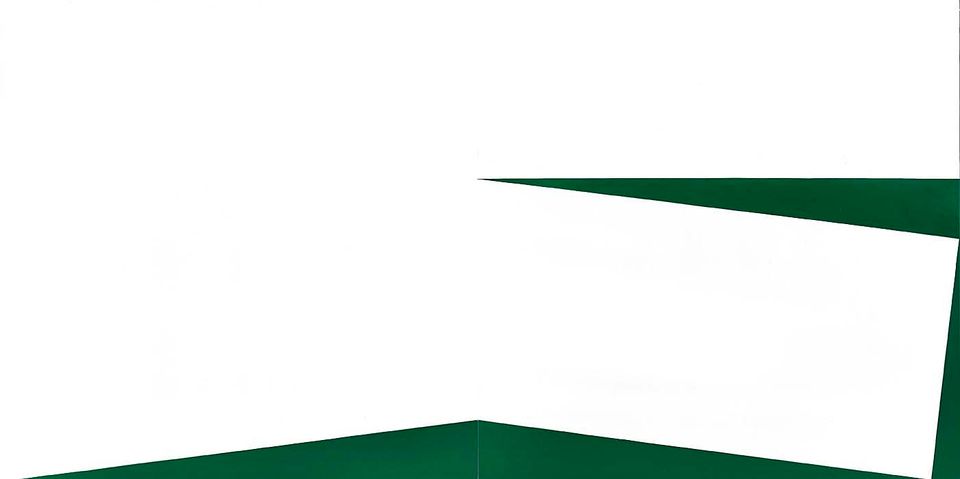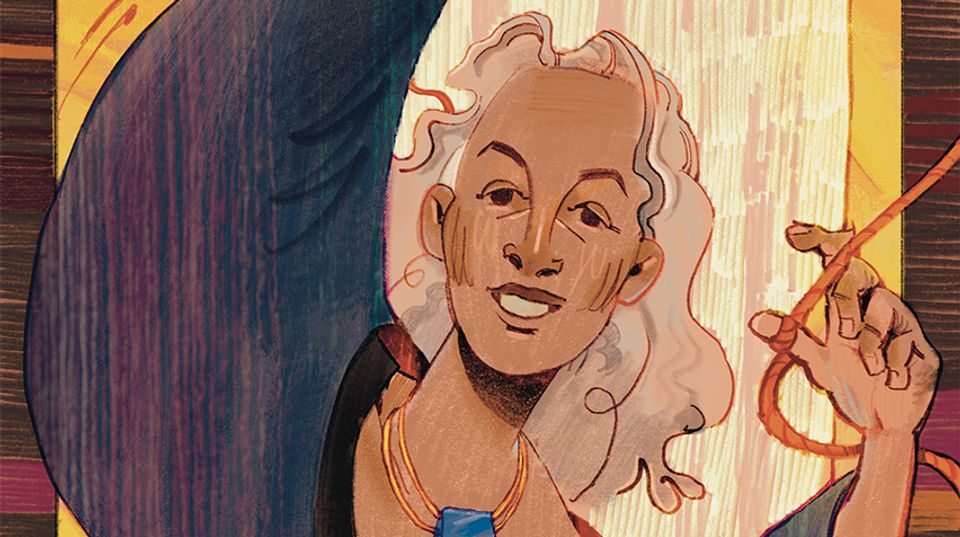

Curator for Latino Art, E. Carmen Ramos, shares some of her thoughts about a recent acquisition now on view in the Lincoln Gallery on the third floor.
Take a stroll through the Lincoln Gallery and you will encounter a striking new acquisition: Carmen Herrera’s Blanco y Verde (White and Green) from 1960. Born in 1915 in Havana, Cuba, Herrera studied painting, sculpture, and architecture in her native country before moving to New York City in 1939. After a productive sojourn in Paris, she settled permanently in New York in the early 1950s, befriending fellow abstractionists such as Barnett Newman and Leon Polk Smith, among others. Working in obscurity for most of her career, Herrera was recently rediscovered at age 94 when her works were featured in several exhibitions that presented her as a pioneering Latin American rather than U.S.-based artist.
Blanco y Verde was created in the fertile years following Herrera’s return to New York. Comprised of two joined canvases, this dynamic composition sparingly stages a dance between color and form. On the left, a white square is seemingly pushed up by a green wedge toward the bottom edge of the canvas. On the right, white space is intersected by three triangles going through the middle, side and bottom of the picture, dividing the space into two white rectangular forms. Overall, Herrera constructs a series of pressure points where triangles meet the edge of the canvases, or butt up against each other to create an even larger triangular form that appears to open up pictorial space.
When I first arrived at the Museum last year, acquiring a work by Carmen Herrera was top on my to-do list. I’ve always been intrigued by how European immigrant artists in the United States quickly get absorbed into an American art historical narrative, and artists like Herrera never quite lose their foreignness. By placing Herrera’s work in our collection, we are now able to emphasize her ties to her adopted country, where she has lived for over 70 years.
I’m overjoyed that Carmen Herrera is finally in the company of her peers. We purposely installed her angular Blanco y Verde across from Ellsworth Kelly’s amoebic Blue on White (1961). These two canvases allow visitors to see the different ways artists of the same generation fused color and shape. Interestingly, both works share similar titles that refer to color—albeit written in different languages. Kelly’s title suggests that one color floats on top of the other, and Herrera’s implies colors coming together, either side by side or intersecting. Clearly, Herrera formed part of a larger group of artists in the United States and abroad that were deeply committed to abstraction and experimentation. Now our visitors can see the beautiful fruit of her labor.


















